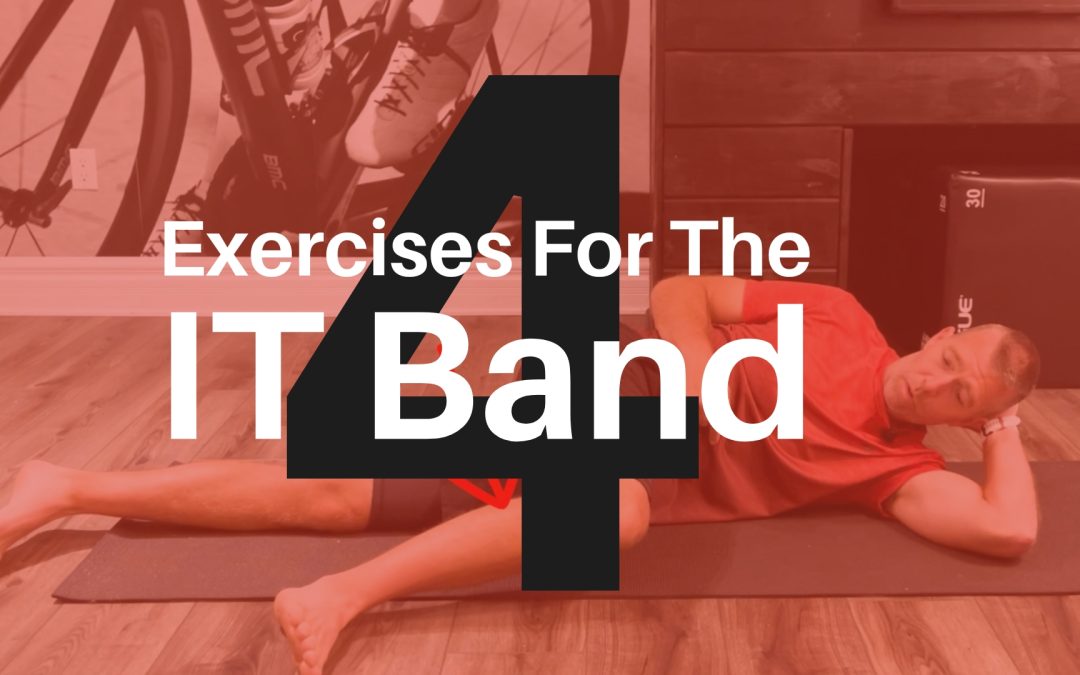Improving flexibility of the iliotibial band (IT band) is a common goal with latera knee pain. But due to the anatomical connection with the hip, stretching and mobilization of the IT band is often required when treating lower back, sacroiliac (SI), and lateral hip pain as well.
But the IT band is a difficult structure to target. So in this article I’m going to review 4 exercises that you can use to stretch and mobilize the IT band.
But First, let’s quickly review some basic anatomy so we can understand why we’re using these specific exercises.
Basic Anatomy Of The Iliotibial Band (IT Band)
The ITB is a thickening of the fascia lata of the thigh (the superficial fascial sleeve that surrounds the thigh). Proximally, this fascia surrounds and invests the abductor muscles (most notably the TFL) of the lateral thigh and inserts onto the iliac crest and ilium. The IT Band also has a significant fascial connection with Gluteus Maximus at this area as well (1)
From this proximal attachment the IT band runs down that lateral aspect of the thigh, where it makes a direct, fibrous connection with the lateral femoral condyle (LFC). Here there will also be fascial fibers that connect into the patella (2).
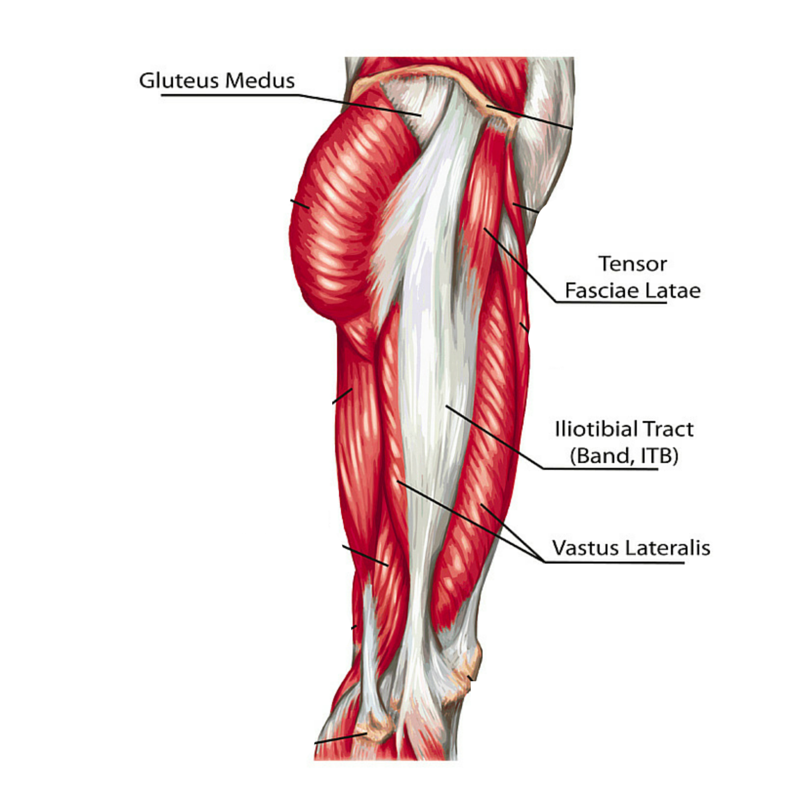
From the insertion into the LFC there will also be fibers of the IT Band that continue down to insert onto the lateral aspect of the tibia at Gerdy’s tubercle.
This distal end of the IT Band is considered the ligamentous portion of the ITB (connecting bone to bone). The section proximal to the LFC is considered the tendionous section as it represents an extension of the TFL and Gluteus Maximus from the hip to to the knee.
Clinical Pearl:
A diagnosis of “IT Band Friction Syndrome” is inaccurate. Due to the fibrous connection into the distal thigh the IT Band will not slide over the lateral femoral condyle. Instead the pain with IT Band syndrome is a result of compression of the IT Band against the lateral condyle and the adipose tissue that occupies the lateral recess. (2)
Stretching The Iliotibial Band (IT Band)
Due to the anatomical connections noted above, stretching the IT Band requires motion at both the hip and knee.
At the hip, adduction will be required to create length/tension through the proximal aspect of the IT Band. Due to the primary investment of the IT Band with the TFL, the most common position that is needed to target the ITB is going to include a combination of both hip adduction and hip extension (see exercises below).
However, in cases in which the posterior aspect of the IT Band where the GMax connects is more involved, we may need to use a combination of hip flexion and adduction (see exercises below).
Distally we must recognize that the IT Band will stretch/lengthen as the knee flexes. This is due to the fibrous connection of the IT Band and fascia lata into the patella itself, as well as the connection of the IT Band into Gerdy’s tubercle. (With the flexion the knee will also internally rotate. Both of these motions will lengthen the distal IT Band.)
Clinical Pearl
Due the the anatomical connections at the hip and knee, The IT Band must be stretched with a combination of hip adduction and knee flexion.
4 Exercises For The Iliotibial Band (IT Band)
Recall that the IT Band will be continuous with the TFL and the GMax. These 2 first stretches will be most effective to target the posterior portion of the IT Band (i.e. GMax connection).
Side Lying 90/90 IT Band Mobilization
1. Begin side lying with the top leg (the leg to be stretched) pointing straight ahead, with the knee bent and the foot resting on the floor.
2. Actively pull your knee and thigh down towards the floor. Hold for 1-2 seconds. This should NOT cause pain in your knee.
3. Now actively lift your knee and thigh up towards the ceiling. Do not allow your pelvis or trunk to rotate back as you do this. Keep the motion isolated to your hip. Hold for 1-2 seconds.
4. Perform 10 slow repetitions.
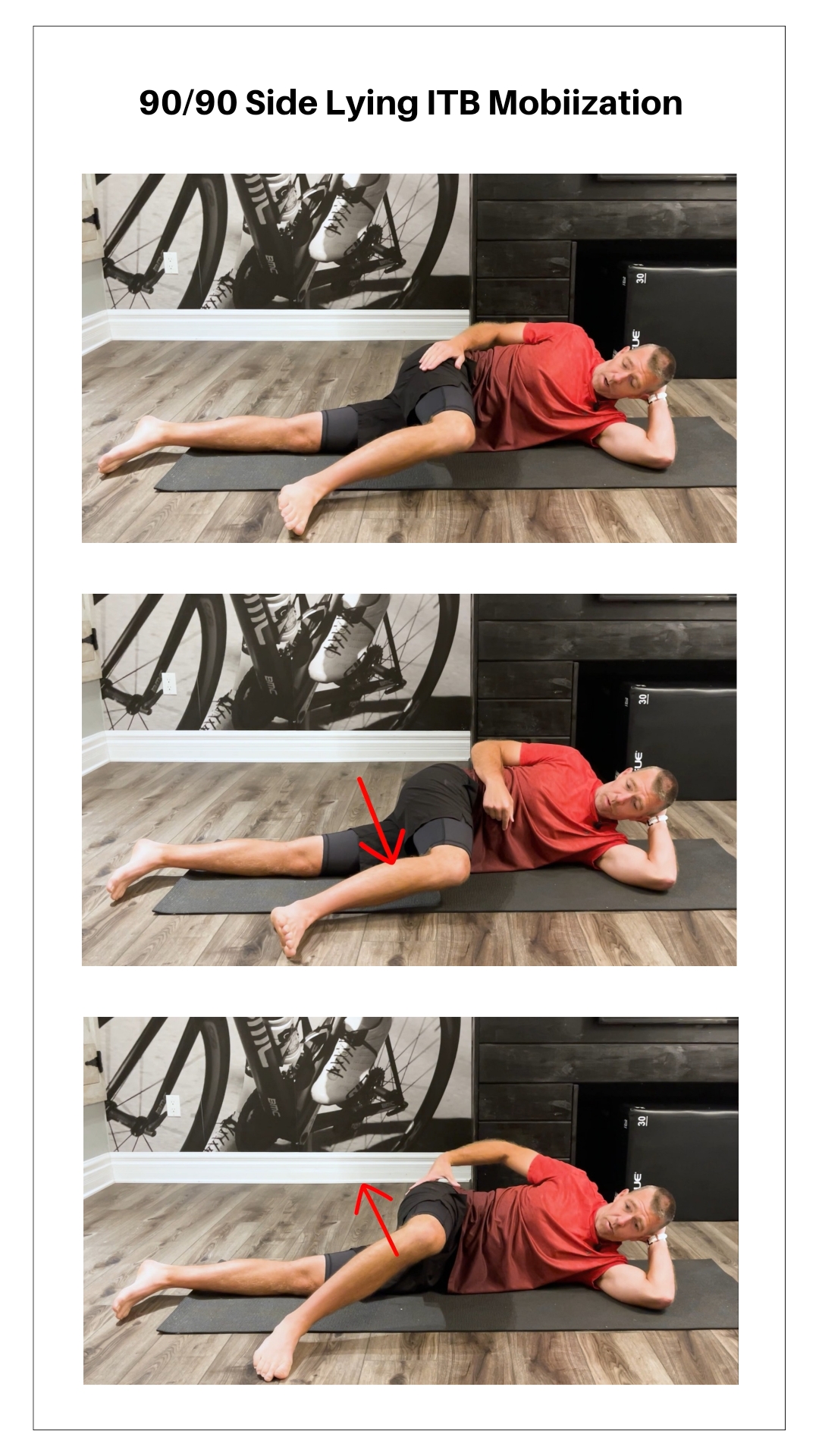
Side Lying 90/90 IT Band Stretch
1. Begin side lying with the top leg (the leg to be stretched) pointing straight ahead, with the knee bent and the foot resting on the floor.
2. Let the knee drop down towards the floor.
3. Use your hand to press/pull the knee down towards the floor to deepen the stretch.
4. Hold for 30 seconds. Perform 3 repetitions.
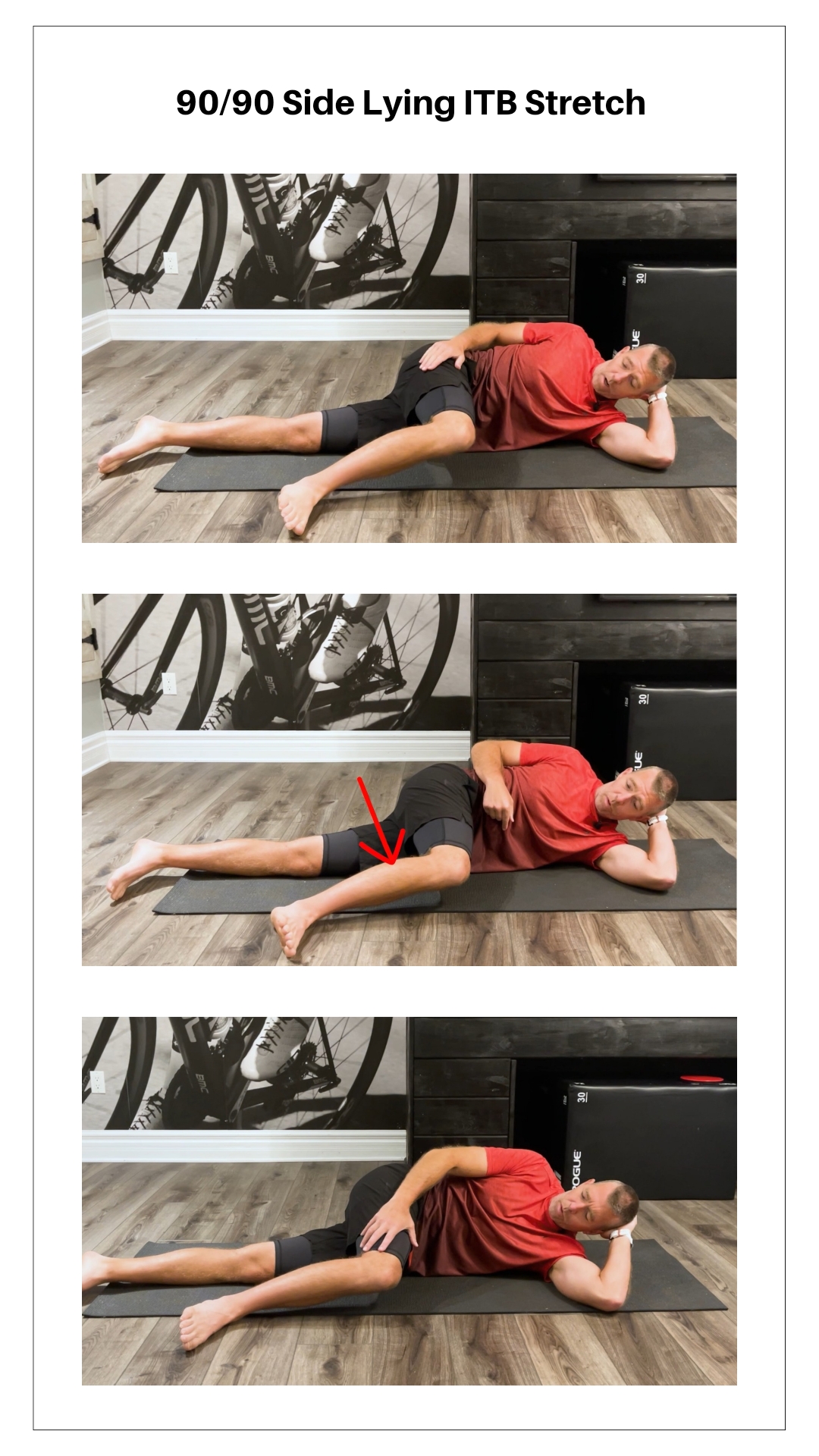
These next 2 stretches will be most effective to target the anterior portion of the IT Band (i.e. TFL connection).
Side Lying IT Band Mobilization
1. Begin in a basic 90/90 position. The hip/leg to be stretched will be the top leg. This leg should be positioned in line with your upper body.
2. From this position drop your shoulders and upper back down to the floor so you are lying on your side. Your knee and thigh will lift off the floor as you do this. But keep your foot resting on the floor.
3. Now actively pull your knee and thigh down towards the floor. Hold for 1-2 seconds. This should NOT cause pain in your knee.
4. Perform 10 slow repetitions.
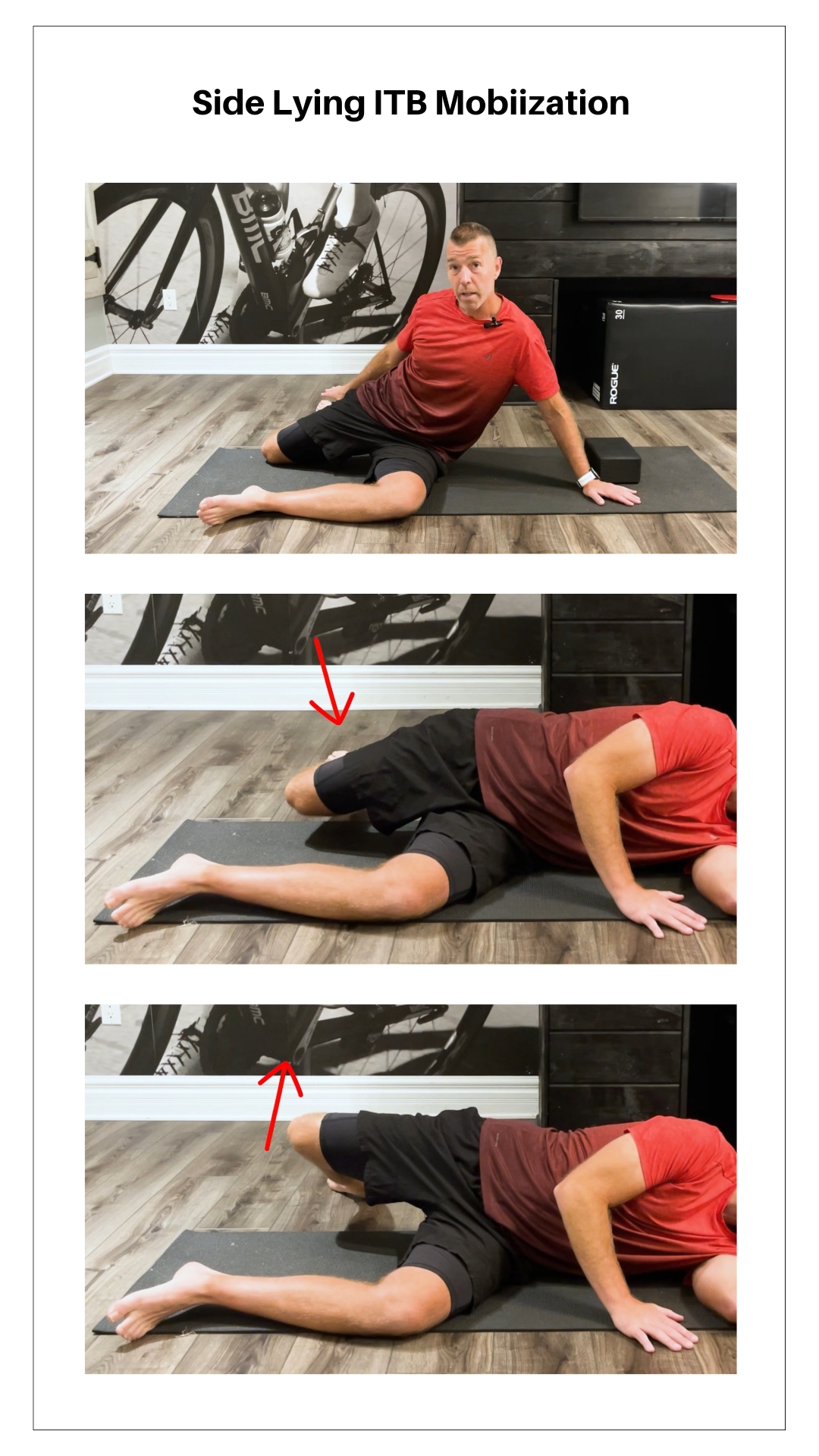
Side Lying IT Band Stretch
1. Begin in a basic 90/90 position. The hip/leg to be stretched will be the top leg. This leg should be positioned in line with your upper body.
2. From this position drop your shoulders and upper back down to the floor so you are lying on your side. Your knee and thigh will lift off the floor as you do this. But keep your foot resting on the floor.
3. Now let your knee and thight drop toward the floor. This should NOT cause pain in your knee.
4. Use your opposite foot/leg to pull the thigh farther down towards the floor to deepen the stretch.
5. Hold the stretch for 30 seconds. Repeat 3 times.
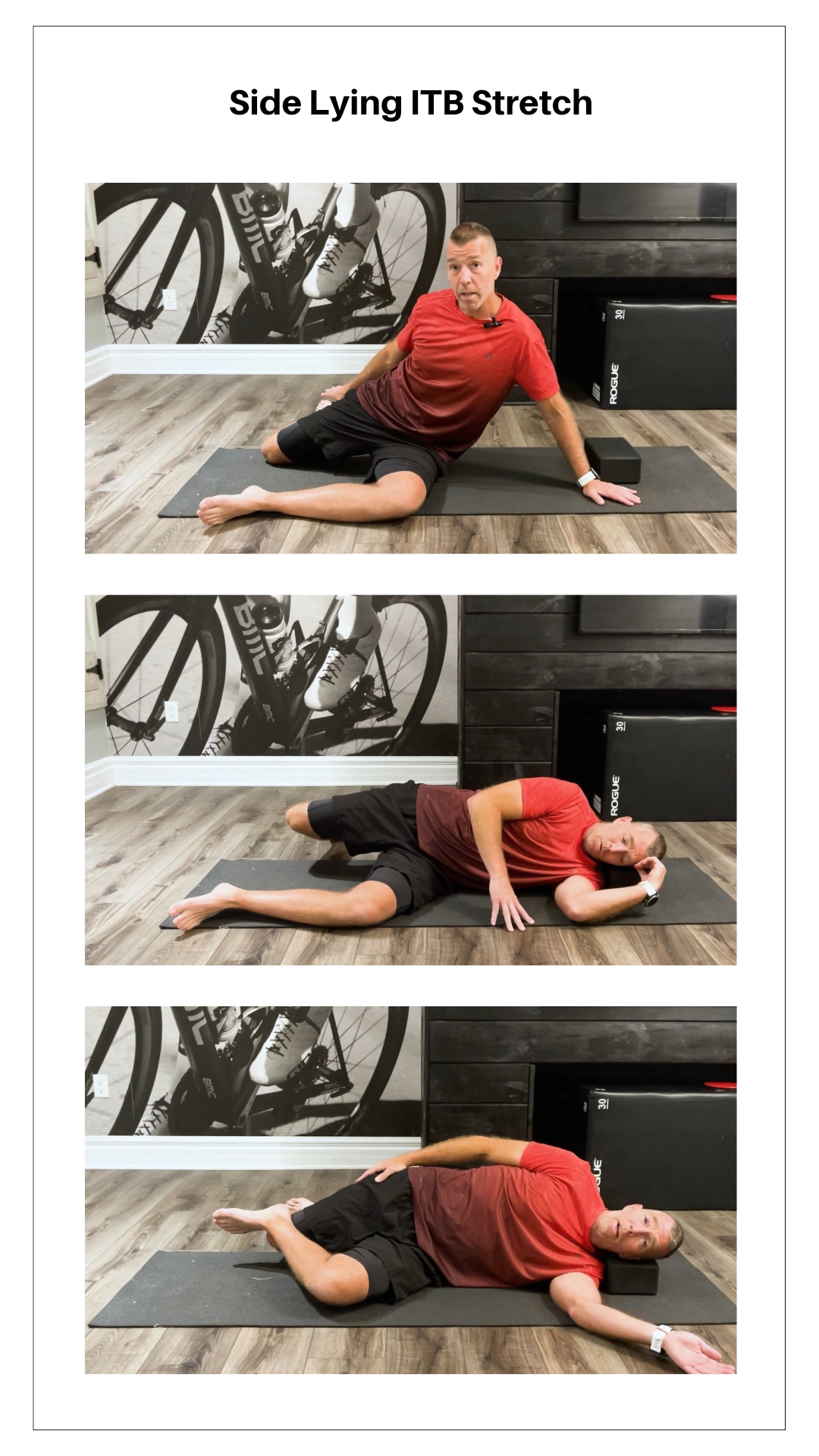
References
- Huang BK, Campos JC, Michael Peschka PG, Pretterklieber ML, Skaf AY, Chung CB, Pathria MN. Injury of the gluteal aponeurotic fascia and proximal iliotibial band: anatomy, pathologic conditions, and MR imaging. Radiographics. 2013 Sep-Oct;33(5):1437-52.
- Fairclough J, Hayashi K, Toumi H, Lyons K, Bydder G, Phillips N, Best TM, Benjamin M. The functional anatomy of the iliotibial band during flexion and extension of the knee: implications for understanding iliotibial band syndrome. J Anat. 2006 Mar;208(3):309-16.

